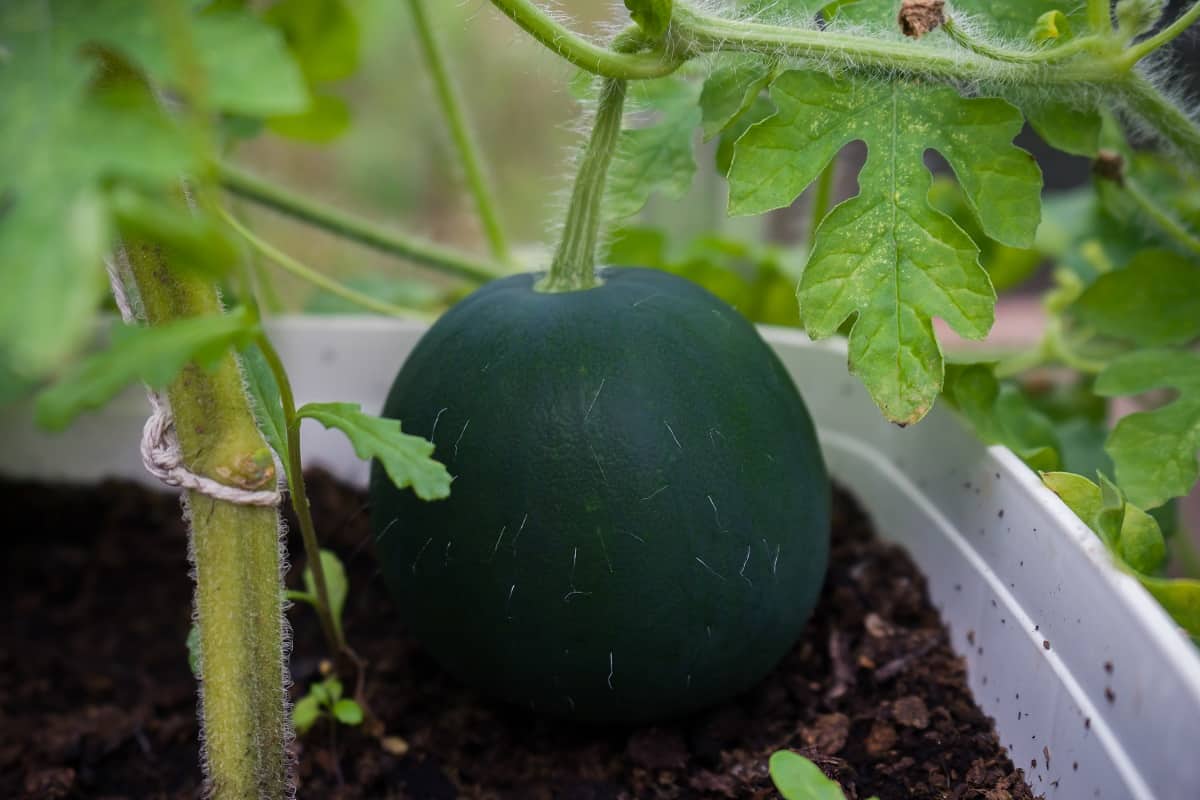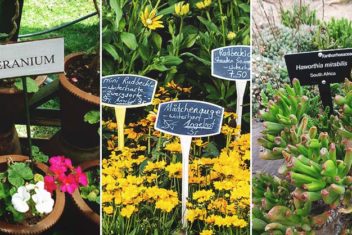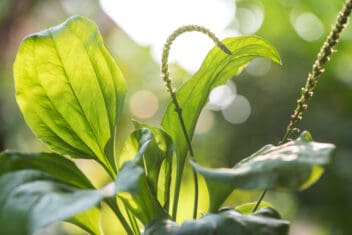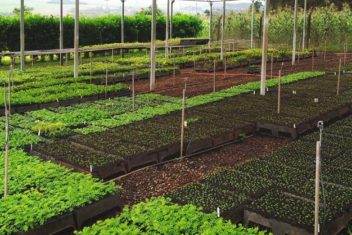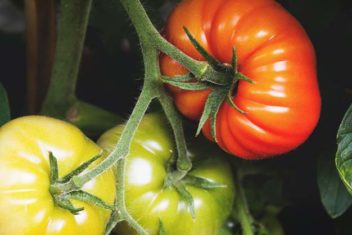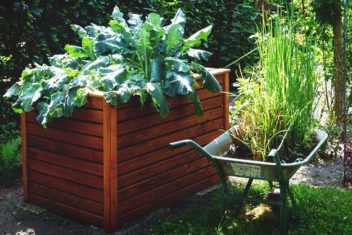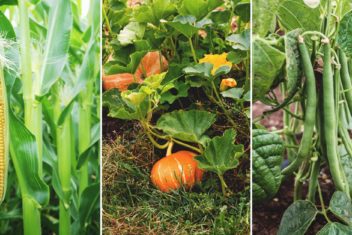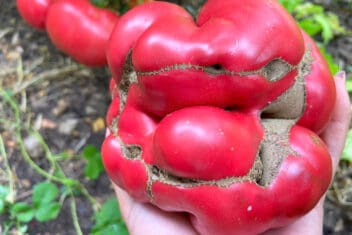For the first time ever this year, I tried my hand at growing watermelon.
Although the plants did remarkably well, forming long, trailing vines that twisted and turned and curled all over my garden, they were sadly killed by an early frost. Following the frost, I might add, there was a period of about 6 more weeks of warm weather in which the plants would have flourished.
So frustrating!
If you’re like me and live in a cold growing zone in which growing warm weather-loving crops like watermelon is a challenge, you might be wondering if there’s a way to make things a little easier.
I’ve found a couple of strategies, one of which involved growing watermelon in my hoop house (it was somewhat of a success).
Another option is to grow watermelon in a container.
Besides increasing your growing season, there are several other reasons to consider growing watermelon in a container. In this article, I’ll tell you all that you need to know about this unique growing strategy.
Why You Might Want to Grow Watermelon in a Container
There are 3 primary reasons as to why you might want to grow watermelon in a container, and almost all of them have to do with ease.
For me, growing watermelon in a container is all about making the most of my very limited growing season. Watermelon can’t go outside until the risk of frost has passed, which in some areas, may be pressing into Memorial Day or even far later.
If you have a freak early frost, your plants will die and watermelon can’t be ripened off the vine – so say goodbye to your hard-earned harvest!
Growing watermelon in a container is an easy way to extend your growing season and make the most of limited time.
Container-grown watermelon is also a good idea if you want to grow watermelon during the winter months. Although you will undoubtedly have to supplement some light, as watermelon needs a fair amount of daytime light in order to thrive, growing watermelon in a container indoors is a good way to keep the gardening going even during the dead of winter.
Finally, it’s a good option for people with limited space.
Whether you plan on growing watermelon in containers indoors or outside, growing it in a container will lend you the flexibility necessary to move your containers around wherever you see fit. You can stash the containers under a grow light in an unused corner of the living room, or you can put them out on an apartment balcony.
Your options are limitless. Container-growing watermelon is a great way to make gardening easier – and to help you make the most of limited resources and physical constraints.
How to Grow Watermelon in Containers
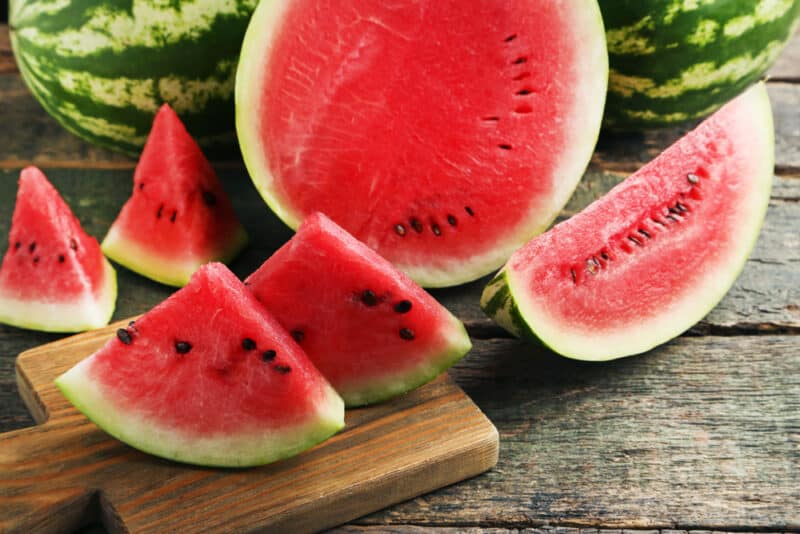
1. Start with the Right Variety
Before you begin growing watermelon in a container, you’re going to have to choose the right variety. Not all watermelon types are equally well-suited for container growing. You will have to choose a compact variety that produces relatively small fruits, like Sugar Baby, Moon, and Stars, or Crimson Sweet.
Some other good, compact varieties of watermelon include:
- Early Moonbeam
- Golden Midget
- Millenium
- Solitaire
- Orange Sweet
- Jade Star
- Jubilee
2. Choose the Perfect Container
Even if you choose a more compact variety of watermelon, as mentioned above, you’re still going to need to choose the right sized container for your needs. Choose a container that will be large enough for your mature plants and also allow for good water retention. Ideally, your container should be at least 5-gallons or larger and equipped with plenty of drainage holes.
Fill your container with potting soil or a soilless mix. Avoid using soil from your garden as this can become compacted and even transmit harmful diseases and pests to your new watermelon plants.
3. Start from Seed, Rather Than Transplant
No matter what kind of watermelon you decide to grow, always start from seed. Watermelon transplants have fragile roots that are easily damaged during transplanting.
If you want to get a jumpstart, you can always start from seed indoors, but be sure to plant your seeds in biodegradable peat pots so that you can plant the whole pot in your container later on, rather than having to disturb the roots.
When you’re ready to plant, insert your seeds in a hole that is about 3 times deeper than the seed. Water well. If you are planning on putting your container outside, you should wait to do so until the danger of frost has passed.
4. Soil and Sunlight Requirements
Regardless of whether you are growing in a container or growing directly in the ground, watermelon should be grown in loose, aerated soil that is very fertile. A neutral pH is best. Amend the soil before planting with compost or another type of organic matter.
Position your container in full sunlight. Watermelon plants won’t form fruit as well when they are grown in the shade. If you don’t have a sunny enough spot inside your home for your containers, feel free to put the containers outside or to use a supplemental grow light.
5. Watering and Fertilizing
Water your watermelon plants every day. As the name of the fruit alone implies, watermelon requires a lot of moisture. Depriving your plants of moisture will lead to fruits that are undersized, bitter, and dry-tasting.
You may also have to fertilize your plants as watermelons are heavy feeders. Not only that, but moisture and fertilizer leach easily from containers, so you will need to supply your watermelon with what they need to grow.
Again, it’s important to water daily, and you may need to fertilize as often as once a week with a water-based fertilizer or compost (or once a month if you are using a granulated slow-release fertilizer).
6. Trellis Your Watermelon
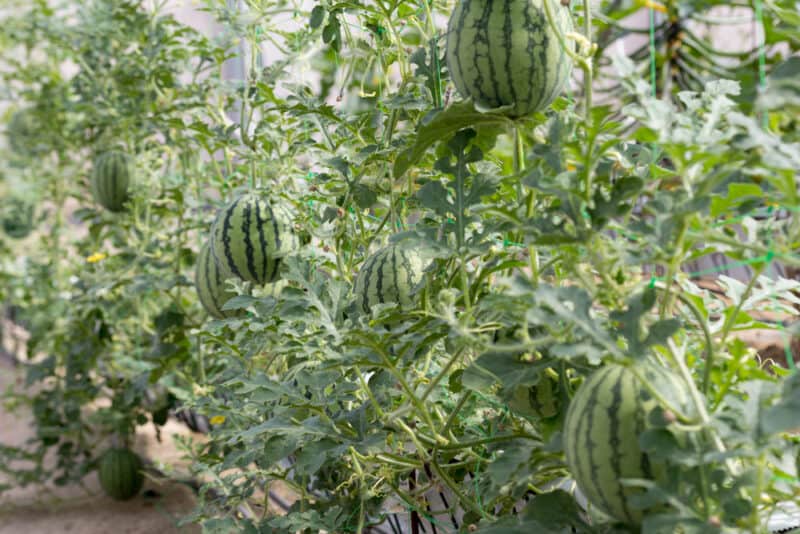
After planting your watermelon seed, it’s a good idea to install your trellis system right away. That way, you won’t have to worry about working around the vines as they grow larger, longer, and more cumbersome.
If you’re growing watermelon in a container, chances are, you’re lacking in space. If you don’t install a trellis or any other kind of support, your watermelon will rapidly take up all the free space you do have available.
You can put in a teepee-shaped trellis or a traditional vertical trellis. Whichever you choose, be sure to train the watermelon vines as they grow, entwining them up the support.
7. Mind Potential Pollinator Issues
One of the big issues that arise when growing watermelon indoors is that you don’t have access to pollinators inside a home or apartment. You can move your container outside periodically when the watermelon plants have flowered, or you can hand-pollinate the flowers.
This sounds complicated, but really it just involves taking a bit of pollen from a flower with a Q-tip and redistributing it.
8. Support Fruit Once it Appears
Trellising your watermelon plants is a good start, but you’ll also need to provide support for the fruits once they appear. Watermelon is heavy, especially if it’s growing in a vertical fashion.
You can use a piece of fabric, like a stretchy tee-shirt, to create a hammock beneath the fruit. Simply tie each end to the watermelon’s main support. It will stretch to support the watermelon as the fruit gets bigger.
When is Watermelon Ready to Harvest?
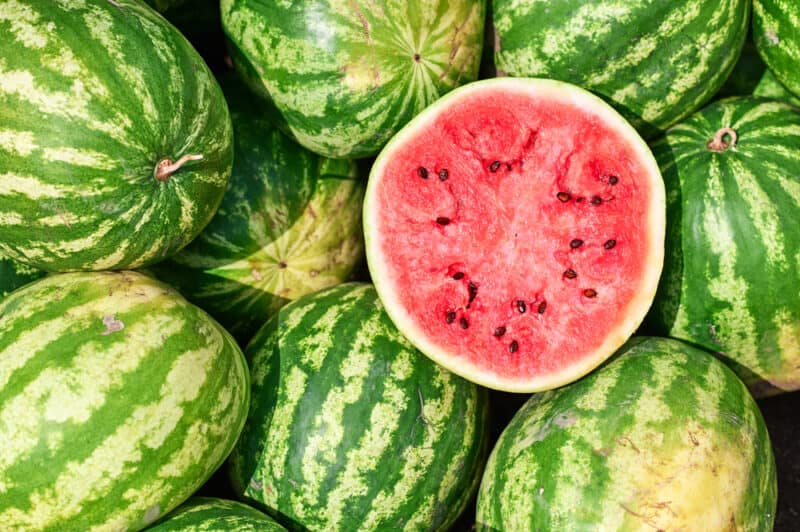
Now, the moment you’ve been waiting for – it’s time to harvest your watermelon! Watermelon is ready for harvest when the underside of the fruit changes from being a greenish-white color to a more buttery shade of yellow. You’ll find that ripe watermelons become duller (and less shiny), too.
Usually, watermelons are ready for harvest about 32 days after the flowers have bloomed on the plants. They’ll mature more quickly in hot weather, though (or if you’re growing indoors, in warm indoor conditions there, too) so don’t use the calendar as a guide but instead just monitor your individual plants.
A ripe watermelon will make a “plunking” sound when tapped and you may notice that the vines have begun to dry out and wither, too.
With any luck, you should be able to grow several batches of tasty watermelon each year for you and your family to enjoy. Don’t be afraid of growing several varieties so that you always have fresh watermelon on hand. It’s the perfect addition to a homestead container garden, no matter where you live.
